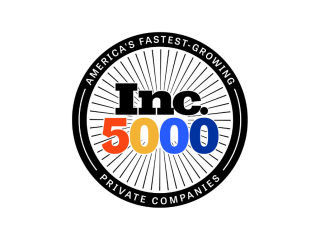Maintaining Social Advertising Spend during COVID-19
“When times are good, you should advertise. When times are bad, you must advertise.”
Yes, this is another post about COVID-19, but this one is different! Unlike so much happening in our personal and professional lives, this post isn’t about change, but rather is more focused on maintaining some sense of continuity in your marketing through these unprecedented times.
We know you have questions, and while there isn’t a blanket answer for every business, we want to help you navigate through these times. In times of crisis, there is usually an instinct to pull advertising spend, but business research and marketing literature suggest that brands cutting marketing spending during crises can actually hurt their long-term business by an amount that outweighs any short-term marketing savings.1 Below are a few reasons we believe continuing to spend on digital advertising, specifically on social media, is not only beneficial to your business right now, but could prove to be one of the most effective ways to carry your business through the uncertain days, weeks, and potentially months ahead.
Heightened Digital Attention
While data on how digital user behavior is being affected is rolling in on a continuous basis, all data thus far indicates that users are consuming more content online than ever before, and are continuing to positively engage with ads:
- 87% of U.S. consumers are consuming more content (broadcast TV, online video, online TV)2
- Facebook reported as the most used for up-to-date news and information about coronavirus2
- 23% of US users have reported turning to eCommerce more frequently than one month ago3
- 70% increase in web browsing, and 61% increase in social media engagements over normal usage rates5
More users scrolling through Facebook and Instagram means these platforms are able to serve more ads; this increase in ad inventory is bringing down the cost to show impressions to your target audience. You have an engaged audience who is cheaper to reach than ever before. In March 2020, Smarty’s own data suggests that CPM (Cost per 1,000 Impressions) has decreased as much as 33% MoM and 61% YoY. Keeping campaigns running during this time will likely result in lower CPMs, ultimately leading to lower costs for clicks, leads, and conversions.
Advertising Through a Recession
There’s been talk about an economic recession coming as yet another negative effect of this pandemic. While that may be speculation at this point, it’s still leading businesses to cut back discretionary spending, often including ad spending. A multitude of studies dating back nearly a century all conclude that advertisers that continued spending during a weaker economy increased both sales and market sharing during the recession and afterwards. As far back as 1927, a study tracked businesses during the recession of 1923 and found that companies that had continued to advertise were 20% ahead of where they had been during the recession, while companies that reduced or stopped advertising were still in the recession5. Despite natural inclinations to pull back advertising spend, maintaining budgets could actually result in a boost in sales and market share beyond the recession itself.
Maintaining Competitive Share of Voice
Generally in any crisis or disruption to business as usual, many businesses’ first instinct is to turn off all paid media dollars until the situation dies down or until their team has had time to re-strategize. If your competitors are amongst those pausing their ads at this time, this could be your opportunity to increase your share of voice – and with lower costs to achieve it! On the flip side, if your competitors are amongst those remaining in market, it’s even more crucial to remain in market so you don’t lose any brand awareness as they take advantage of cheaper impressions. You can always use Facebook’s Ad Library tool here to check on ads your competitors have in market now.
Social Halo Effect
In any strong multichannel marketing mix, each active channel will have a positive effect on other channels in market – increased brand awareness from display ads may increase searches and traffic to site, which in turn increases retargeting audience sizes for social ads, leading to increased conversions. Cutting out any one of those channels completely is like removing a link from a chain – your strategy becomes weaker and won’t operate as efficiently.
In pulling data from internal eCommerce clients, our data shows that spend in social is positively correlated with revenue on both Amazon and brick & mortar. As social spend increases, revenue in other channels (outside of eComm) generally increases – we’ve seen positive correlations in this analysis with results significant at p<0.05. Maintaining baseline social ad spend ensures that revenue is not negatively affected in other channels in weeks to come.
Facebook’s Learning Phase
Facebook’s algorithms have a “learning phase” when its delivery system is actively experimenting showing ads to different users within target audiences on different placements, etc., so performance can be volatile, and oftentimes CPA can be worse during this phase. Any significant edit, including pausing a campaign for 7 days or longer, forces the campaign to reenter the learning phase. Continuing social spend will reduce time spent in this volatile learning phase and ensure the results you’ve worked hard to achieve aren’t stalled.
Switching Up Your Objectives
Many marketers and businesses are heavily focused on performance marketing – primarily using social to drive meaningful business KPIs (leads, purchases, subscriptions, etc.). Depending on the business you or your client is in, now may not be the best time to push conversions – consumers may be trying to save money with the economy and job security so uncertain, or they may just not be in the right mindset to commit to a new product, service, or subscription. This doesn’t mean you should abandon advertising! Facebook offers so many campaign objectives outside of conversions that are still beneficial to your brand. At this time, shifting your strategy to a more upper-funnel approach could be a tactical pivot. Brand Awareness is a low-cost, top-of-funnel objective that’s optimized to drive as many impressions to people who are most likely to recall them. This could beneficial to your business in multiple ways:
- Because Brand Awareness is a low-cost objective, if you need to scale back budgets, this would be a more effective campaign than attempting to maintain a conversion-optimized campaign with minimal results
- Shifting to Brand Awareness allows you to alter your messaging – introduce your brand to prospective customers, while also showing these users how your brand is handling the COVID-19 crisis
- Brand Awareness campaigns can fill the top of your conversion funnel with net-new prospective customers which expands retargeting opportunities in the future
Balance
For businesses and marketers alike, this time can be especially challenging – maintaining revenue and business while remaining sensitive and empathetic to consumers you’re reaching is a tough balancing act. You shouldn’t feel guilty about continuing advertising, but be cognizant and respectful of this new reality as you develop thoughtful, though still strategic, campaigns.
If you’d like help strategizing and pivoting during this time of uncertainty, we’re here to help! We are offering a free 1 hour strategic consultation to anyone feel stuck or unsure of how to continue. Both our CEO and Media Director will meet with you and help you come up with your best path forward. Request your free session here.
Sources: 1 Magna Global, 2020 2 GWI Covid-19 Research 3 Ipsos, March 17, 2020 4 Kantar, COVID-19 Barometer5 Harvard Business Review, 1927



Leave a Reply